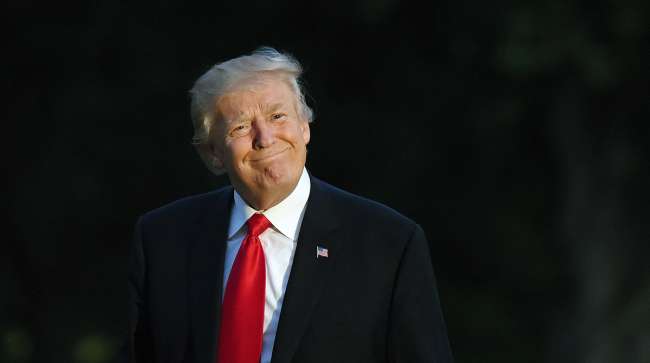Trump’s NAFTA Demands: 'Fairer' Deal, Address 'Imbalances'

President Trump laid out his demands July 17 for a new North American Free Trade Agreement, setting the stage for rounds of negotiations among U.S., Canadian and Mexican officials to overhaul the landmark treaty that dictates the nations’ cross-border commerce.
The administration’s agenda was required to be sent by U.S. Trade Representative Robert Lighthizer to Congress at least 30 days before negotiations began.
NAFTA, drafted in 1994 and signed by the Clinton administration, created a free trade zone in North America by eliminating most tariffs and encouraging the unimpeded flow of products that many economists say has benefited its member nations. Dismantling it would lead to lost business opportunities and massive operational disruption for American companies, its proponents say.
Trump and other global trade skeptics, including many labor unions, say it has led to hemorrhaging of domestic manufacturing jobs and depressed wages.
“The new NAFTA must continue to break down barriers to American exports,” according to a summary of Trump’s agenda posted on the USTR’s website. “This includes the elimination of unfair subsidies, market-disorienting practices by state-owned enterprises, and burdensome restrictions of intellectual property. The new NAFTA will be modernized to reflect 21st century standards and will reflect a fairer deal, addressing America’s persistent trade imbalances in North America.”
The summary of Trump’s demands reflects the change in his tone, said Gary Clyde Hufbauer, a senior fellow at the Peterson Institute for International Economics.
“The tone of this is much more conducive to negotiations than the kind of things he threw out during the campaign. His hard-line demands are consistent with the objectives. But he’s not beating the drum,” he said.
Among key demands:
• Update rules of origin.
Trump believes these rules cause too many parts from non-NAFTA countries — used in goods assembled in the NAFTA region — to come into the U.S. tax-free. Companies that make goods with certain percentages of components (parts and labor) bought in the NAFTA region can sell them in the NAFTA countries without paying a border tax.
The rules should be updated to “incentivize the sourcing of goods and materials from the United States and North America,” the agenda said.
• Doing business with governments.
Trump wants the U.S. government to preferably buy from American suppliers. But he also wants to “increase opportunities for U.S. firms to sell U.S. products and services into the NAFTA countries” by establishing fair and transparent rules in government. “It’s completely contradictory,” Hufbauer said.
• Trade remedies.
The administration wants to preserve the ability of the U.S. to enforce its trade laws, including anti-dumping laws. It also wants to eliminate a current NAFTA dispute settlement mechanism that allows an independent panel with members from both countries to settle cases. This is “the toughest section” of Trump’s demands, Hufbauer said.
• Digital data flow.
Trump is seeking commitments not to impose customs duties on digital software, music and video. It’s also demanding NAFTA countries do not require e-commerce companies to use local servers.
Distributed by Tribune Content Agency, LLC

